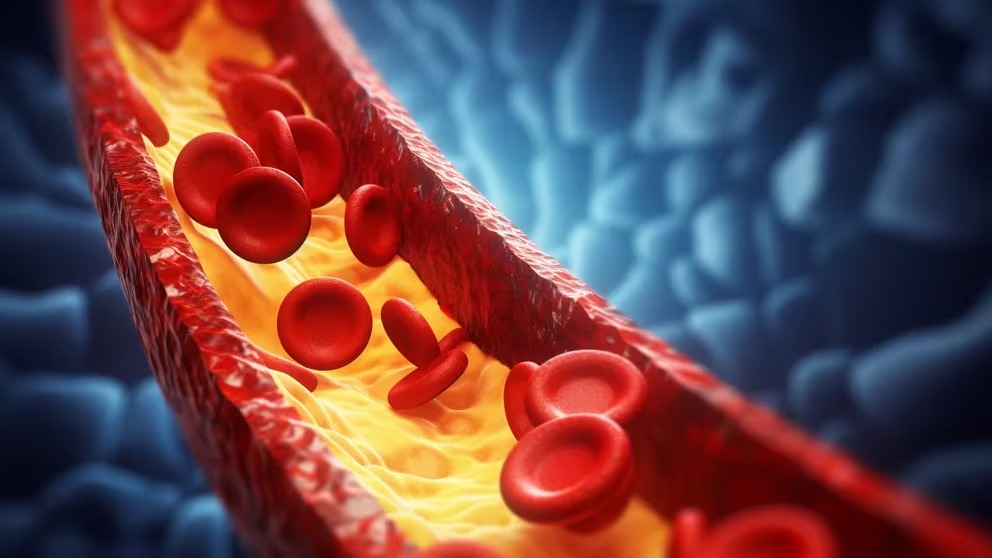The term cholesterol It encompasses all the fat particles that circulate through the human body. They are present in all the cells that are necessary for the normal functioning of the body.
Most of the cholesterolIt is produced in the liver, although it is also obtained through some foods. And the main cause of increased cholesterolIt is the consumption of products with saturated fat.
Today, September 19th, is the World Cholesterol Dayan event dedicated to raising awareness about the risks of having high levels. It is recommended that each person go to their doctor to have a simple blood test done to determine their levels and assess their risk of cardiovascular disease.:quality(85)/cloudfront-us-east-1.images.arcpublishing.com/infobae/2EYDIYMYQ5ELBFIJW2QG67SXFU.png%20420w)
When cholesterol levels are too high, cholesterol-carrying particles can build up in the blood vessels. This condition is known as atherosclerosis, and is a major risk factor for heart attacks and strokes.
Recently, a study was published in the journal European Journal of Preventive CardiologyThe global burden of cardiovascular disease is projected to increase in the coming decades, driven primarily by the ageing of the world’s population.
High blood pressure, dietary risks and cholesterol disorders are the predominant risk factors that will drive cardiovascular diseases from 2025 to 2050, according to a study conducted by scientists from institutions in the United States, New Zealand and Singapore.
What is the normal cholesterol level?
:quality(85)/cloudfront-us-east-1.images.arcpublishing.com/infobae/7QO7NRD2IZBCHN7MSWCQLPXB5Y.jpg%20420w)
Cholesterol levels are measured in milligrams per deciliter (mg/dL). Here are general guidelines showing desirable values for people over 20 years of age:
- Total cholesterol: less than 200 mg/dL. It represents the total amount of cholesterol in the blood, including LDL and HDL.
- LDL cholesterol: below 100 mg/dL. It is the main source of accumulation and obstruction in the arteries. It is called LDL for the acronym in English low-density lipoprotein
- HDL cholesterol: It is recommended that it be greater than or equal to 60 mg/dL. Helps remove cholesterol from the arteries. It is called HDL for its acronym in English. high-density lipoprotein.
- Non-HDL cholesterol: less than 130 mg/dL. It is total cholesterol minus HDL, includes LDL and VLDL
What cholesterol level is worrying?
:quality(85)/cloudfront-us-east-1.images.arcpublishing.com/infobae/XARYTOBDT5HQ7FWGTIYGTB4MG4.jpg%20420w)
Previously, a cholesterol level below 200 mg/dl was recommended. Between 200 mg/dl and 239 mg/dl, the cholesterol level is considered high or borderline high and it is advisable to reduce it.
A cholesterol level of 240 mg/dl or more is considered high and steps need to be taken to reduce it.
In dialogue with Infobaethe doctor Pablo Corral, former president of the Argentine Lipid Society, He said: “Today, every person should consult a health professional to have their cardiovascular risk assessed. The desirable cholesterol level depends on each person’s cardiovascular risk.”
According to the expert, “it should be considered that the body needs cholesterol. We cannot live without cholesterol. According to scientific studies, 40 mg/dl of LDL cholesterol would be sufficient. But when recommending what the desirable level is, an evaluation of different variables in each patient must be made,” said Corral.
High cholesterol can occur in conjunction with other health problems, such as diabetes, kidney disease, and thyroid problems. It is also common to have a hereditary and genetic component, i.e. parents and/or siblings with high cholesterol.
What foods should you eat to lower cholesterol?
:quality(85)/cloudfront-us-east-1.images.arcpublishing.com/infobae/Q7AW7QWRDJF2VNMKREKNLVMRTA.jpg%20420w)
According to the Spanish Heart Foundationto lower cholesterol you should consume more fruits; vegetables; whole grains (bread, pasta, rice); and legumes (three servings per week).
He also recommended the consumption of blue fish (at least three servings a week (tuna, sardine, anchovy or salmon); nuts (nuts, almonds) and virgin olive oil.
These foods provide nutrients that help reduce blood cholesterol levels and increase the so-called HDL cholesterol.
Because they provide monounsaturated fatty acids (present in virgin olive oil), omega-3 fatty acids (blue fish), plant sterols/stanols (in vegetable oils or incorporated into dairy products), antioxidants (such as fruits and vegetables).
What raises cholesterol the most?
:quality(85)/cloudfront-us-east-1.images.arcpublishing.com/infobae/XQFAC44CKZA6ZESYYTHVNK4GII.jpg%20420w)
According to the National Institutes of Health in the United States, an unhealthy lifestyle is the most common cause of high levels of LDL cholesterol, colloquially called “bad” cholesterol, or low levels of HDL cholesterol, called “good.”
Habits that cause cholesterol levels to change are:
- Eating a lot of foods high in saturated fats increases levels of “bad” LDL cholesterol. These fats are found in fatty cuts of red meat and dairy products. No more than 10% of your daily calories should come from saturated fats.
- The lack of physical activity is linked to an increased risk of unhealthy blood cholesterol levels.
:quality(85)/cloudfront-us-east-1.images.arcpublishing.com/infobae/MQS422LYOJBT3ANZXDGSQZSBNY.jpg%20420w) It is recommended to stop using tobacco products. They are also a risk factor for cholesterol disorders (Illustrative Image Infobae)
It is recommended to stop using tobacco products. They are also a risk factor for cholesterol disorders (Illustrative Image Infobae)
- Smoke reduces HDL cholesterol, especially in women, and increases LDL cholesterol
- He stress It can raise the levels of certain hormones, such as corticosteroids. These can cause your body to produce more cholesterol.
- He excessive alcohol consumption (more than two drinks a day for men or one drink a day for women) can increase your total cholesterol level
- Sleeping little or having poor quality sleep has been linked to less favorable cardiovascular health
What symptoms do you have when your cholesterol is high?
:quality(85)/cloudfront-us-east-1.images.arcpublishing.com/infobae/MTEN7EQ7XZCLLMHHNMN4N3L3F4.jpg%20420w)
When and how often you should have this blood test depends on your age, risk factors, and family history.
Dr. Ricardo Rey, head of the ICBA lipid clinic in Argentina, told Infobae that “today it is considered that the optimal value for cholesterol levels is related to each person’s cardiovascular risk.” Therefore, it is necessary to consult a doctor and have the risk assessed.
“If a cholesterol problem is diagnosed, there are different treatments. Statins are the cornerstone. Cholesterol absorption inhibitors, such as the drug ezetimibe, can also be prescribed. Other new drugs also lower cholesterol through different mechanisms, such as bempedoic acid, PCSK9 inhibitors, and inclisiran can also be prescribed – it does not affect the muscles,” explained Dr. Rey.
How can you lower high cholesterol?
:quality(85)/cloudfront-us-east-1.images.arcpublishing.com/infobae/IK2MOEC2PBDQPNGUPOVFADJ754.jpg%20420w)
Eating healthily and doing regular physical activity have been shown to lower blood cholesterol levels.
According to the Ministry of Health of the Nation of ArgentinaTaking statins, which are cholesterol-lowering drugs, is the most effective measure as they also prevent the progression of atherosclerotic disease and reduce the risk of heart attack, stroke and death.
Whether or not you need to take these medications regularly will depend on the cardiovascular risk estimated by a health professional.

















